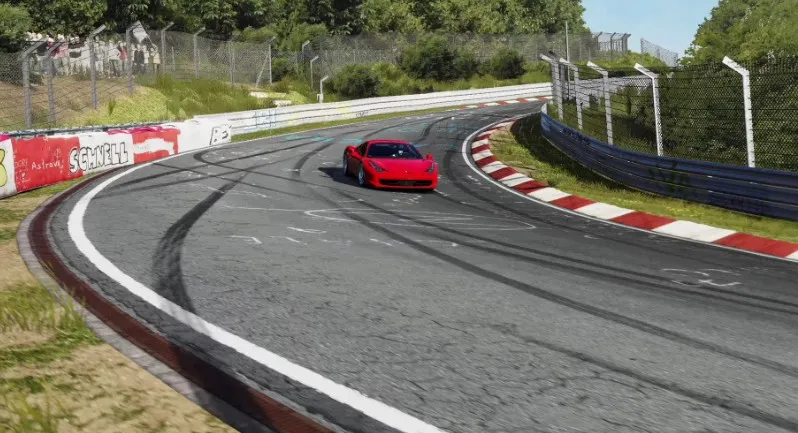Pushing Boundaries: Groundbreaking New Race Tracks Shaping Modern Motorsports
The evolution of motorsports is not just about faster cars or improved technology—it’s also about the tracks where these races take place. In recent years, the design and development of new race tracks have pushed the boundaries of what’s possible, offering thrilling experiences for drivers and spectators alike. These groundbreaking circuits not only showcase modern engineering but also redefine what motorsports can be.
The Role of Innovation in Track Design
New race tracks are being designed with a blend of aesthetics, functionality, and sustainability. While classic circuits like Monaco and Silverstone remain iconic, modern race tracks are embracing innovation in every aspect, from surface technology to environmental impact.
Advanced Materials for Maximum Performance
The development of new track materials is one of the most significant advances in recent years. Modern race tracks often feature surfaces designed to enhance tire grip and durability while reducing the wear and tear on vehicles. These surfaces are built to withstand extreme temperatures, intense speeds, and various weather conditions, ensuring that races can be held under almost any circumstances.
For example, the Circuit of the Americas in Austin, Texas, uses an advanced polymer-modified asphalt that provides superior traction and reduces the risk of cracking. This kind of innovation not only extends the lifespan of the track but also improves race safety and performance.
The Integration of Sustainable Practices
Sustainability has become a key focus in the development of modern race tracks. Designers now strive to reduce the environmental impact of motorsports by incorporating renewable energy sources, water recycling systems, and eco-friendly construction materials. The use of solar panels and wind turbines to power sections of the circuit, as seen in the Formula E tracks, is one example of how modern motorsports is aligning with environmental goals.
Tracks like the Yas Marina Circuit in Abu Dhabi have also incorporated green spaces, water features, and energy-efficient lighting into their design, creating a more environmentally conscious motorsport venue.
Iconic New Race Tracks Around the World
Several new race tracks have emerged in the last decade, each offering unique challenges and features that have elevated the sport. Let’s take a closer look at some of the most groundbreaking circuits shaping the future of motorsports.
1. Circuit de Spa-Francorchamps (Belgium) – A Classic Revamped
Though Spa-Francorchamps is not new, its recent redesign incorporates cutting-edge technology to meet modern racing standards. Known for its challenging elevation changes and sweeping turns, Spa has been updated with improved safety features without compromising the thrill of the race. The revamped Eau Rouge corner is now safer but remains as exhilarating as ever.
2. The Miami Grand Prix Circuit (USA) – A New Jewel in F1
The Miami Grand Prix Circuit, which debuted in 2022, is one of the newest additions to the Formula 1 calendar. Built around the Hard Rock Stadium, this track offers a blend of tight corners, high-speed straights, and Miami’s vibrant atmosphere. The circuit was designed to provide close racing with numerous overtaking opportunities, making it a fan favorite right from the start.
3. Jeddah Street Circuit (Saudi Arabia) – The Fastest Street Track
The Jeddah Street Circuit is an incredible blend of speed and cityscape. Designed specifically for Formula 1, it is currently the fastest street circuit in the world. Located along the Red Sea coastline, the track combines sharp corners and high-speed sections that challenge drivers’ skills and push their cars to the limit. The twilight race adds to the dramatic visual spectacle, making it one of the most visually stunning circuits in modern motorsports.
4. Algarve International Circuit (Portugal) – A Rollercoaster of a Track
Known for its elevation changes and flowing layout, the Algarve International Circuit, or Portimão, has been praised for its dynamic driving experience. The undulating terrain gives the track a rollercoaster-like feel, testing drivers’ precision and control. After being added to the Formula 1 calendar, it quickly gained popularity due to its technical complexity and beautiful setting.
5. KymiRing (Finland) – A Hub for Two-Wheel Racing
KymiRing is the first major circuit in Finland designed to meet the requirements of MotoGP. With its long straights and tight corners, it challenges motorcyclists to navigate sharp turns at high speeds. The track’s design also incorporates safety features specific to motorcycle racing, setting a new standard for tracks in this discipline.
The Future of Race Track Design
As technology and environmental consciousness continue to evolve, so too will race track design. We can expect future circuits to push even more boundaries, incorporating artificial intelligence, smart monitoring systems, and possibly even self-repairing surfaces. Some designers are even exploring the possibility of integrating holographic elements into the track design to enhance both driver experience and fan engagement.
The Rise of Virtual Race Tracks
Another exciting development is the rise of virtual and augmented reality (AR) in motorsports. With virtual tracks, drivers can practice and refine their skills in simulated environments before ever setting foot on the real circuit. AR technology, which overlays information on the driver’s visor, could soon become a standard feature, offering real-time data on track conditions, car performance, and competitor positioning.
Conclusion
The development of groundbreaking new race tracks is pushing the boundaries of modern motorsports. From innovative materials and sustainable practices to the integration of cutting-edge technology, these circuits are not only shaping the future of the sport but also redefining what is possible in track design. Whether it’s the thrilling speed of Jeddah or the undulating terrain of Algarve, modern tracks continue to challenge drivers, engage fans, and elevate motorsports to new heights.

